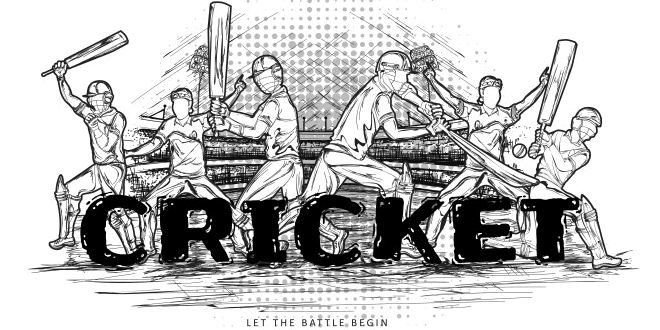The term is a shortening of “duck’s egg”, which was used long before cricket began. When referring to the Prince of Wales’ (the future Edward VII) score of naught on July 17, 1866, a contemporary newspaper wrote that the Prince “retired to the royal pavilion on a ‘duck’s egg'” because the shape of the number “0” is similar to that of a duck’s egg. The Concise Oxford Dictionary still cites “duck’s egg” as an alternative version of the term.
It’s never the best of feelings for a batsman who gets out without scoring a run. When the batter gets out for zero, his score is commonly referred to as a duck in the game of cricket. The term “duck” originates from the “duck’s egg”. The egg has the shape of 0 and hence a nought is commonly called “duck”.
There is an interesting piece of history related to the discovery of this amusing little term. On July 17, 1866, when the Prince of Wales got out for a blob, a newspaper carried out a piece stating that “the prince had retired to the royal pavilion on a duck’s egg”. Since then, the duck has forged a successful relationship with the great game of cricket.
Ducks have quite a few varieties as well and each one of them is quite creatively named. Let’s get to know them below:
Golden Duck
When the batsman gets out to the first ball he faces in his innings, it is referred to as a golden duck. It is extremely embarrassing and heartbreaking for a batter to be dismissed for a golden duck and in most cases, it is usually seen that the batter is jittery and anxious while facing the first ball. Also, sometimes the situation demands the batter to go hell for leather from ball one and he ends up playing a reckless shot and departs for the team’s cause.
In any case, a blob off the first ball doesn’t look all that pretty next to the batsman’s name in the scorecard. MS Dhoni, the current limited-overs captain of Team India, was dismissed for a golden duck on his ODI debut against Bangladesh.
Diamond Duck
It does not get any worse for a batsman than getting out for a diamond duck. When a batter gets out for nought without even facing a single ball, it is referred to as a diamond duck. Generally, a batsman falls for a diamond duck if he is run out from the non-striker’s end without facing a ball. He could also be stumped or run out off a wide ball.
A couple of rarely used terms are the silver duck (where a batsman is dismissed off the second ball of his innings) and bronze duck (dismissed off the third ball). These terms are not as popular as the golden duck or the diamond duck.
Royal Duck / Platinum Duck
When a batsman is dismissed off the first ball of the match / innings then it is commonly referred to as a Royal Duck or Platinum duck. The openers fall under this category as they take the first strike against the new ball.
Pair and King Pair
When a batsman gets out for a duck in the both the innings of a test match then it is said that the batsman has a bagged a pair. When the batsman is dismissed off his first ball in both the innings then it is said that the batsman has bagged a King Pair.
Ducks worth talking about
The first duck was scored by Ned Gregory when Australia took on England at Melbourne in 1877.
- Don Bradman was dismissed for a duck in his last test innings and he ended up with a Test average of 99.94. If he had scored at least 4 runs his average would have touched 100.
- Courtney Walsh holds the record for getting the most number of ducks in Test cricket. Walsh, a genuine number 11, holds the dubious record of 43 ducks to his name.
- Reg Perks of Worcestershire holds the first class record with a jaw-dropping 156 ducks.
- Marvan Atapattu, the former Sri Lankan captain, has 22 ducks (the most by any top order batsman) in tests. Atapattu, who had a torrid start to his career, scored five ducks in his first six test innings.
- Ajit Agarkar, the Indian seamer, is known by the nickname “Bombay Duck”. He got this hilarious nickname after he was dismissed for seven consecutive ducks against Australia during India’s tour down under in 1999.
 Kids Portal For Parents India Kids Network
Kids Portal For Parents India Kids Network




